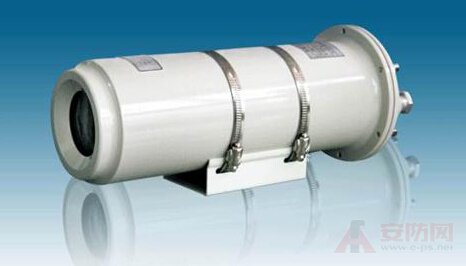[ Huaqiang Security Network News ] 
Before answering the question "Do you need explosion-proof cameras for gas stations?", the concept of explosion-proof cameras is introduced. Explosion-proof cameras are explosion-proof monitoring products, which is a cross-product of the explosion-proof industry and the monitoring industry, because of the high-risk flammability and explosiveness. Can not use conventional camera products, products that require explosion-proof features and relevant certificates issued by national authorities can be called explosion-proof cameras.

How explosion-proof cameras work
The working principle of the explosion-proof camera is to suppress the generation and occurrence of the four elements of the explosion. The electrical products are still working normally in a high-risk environment. The four elements of the explosion are:
First, the site has flammable gases, dust and mixtures and constitutes a certain concentration;
Second, the site has sufficient oxygen to react with combustibles;
Third, there is sufficient temperature at the site to cause the mixture to react in oxygen;
Fourth, the site space is small enough to allow the heat after combustion to accumulate a certain concentration or even blast in a short time.
Any of the above four elements can be effectively prevented from exploding.
Explosion-proof camera application range
The hazardous area is divided into different areas according to the frequency and duration of the explosive environment. The gas field is divided into three areas: Zone 0, Zone 1 and Zone 2; the dust site is divided into three zones: Zone 20, Zone 21 and Zone 22.
Flammable gas, steam and mist gas
Zone 0 (red part)
Explosive mixtures in explosive atmospheres occur continuously in the form of gases, vapors or mists or where they are present for extended periods of time.
Electrical equipment used in Zone 0 shall be designed, tested and marked in accordance with EN 50284 and IEC 60079-26 for the relevant provisions of д and type (gas) electrical equipment.
Zone 1 (orange section)
In normal operation, explosive atmospheres in the form of gases, vapors or mists may occur. Zone 1 is a typical application site for explosion-proof electrical equipment. Standard EN50014~
EN50020, EN50039 and IEC60079-0, -1, -2.-7, -11, -18,-25 specify the electrical equipment used in Zone 1.
Zone 2 (yellow part)
In normal operation, explosive mixtures in the form of gases, vapors or mists are unlikely to occur in explosive atmospheres, and if they occur, they are only occasionally occurring and present in short periods of time.
Normally, "short time" means that the duration is no more than 2 hours.
Standard EN50021 and IEC60079-15 have made corresponding provisions for the electrical equipment used in Zone 2, and must also meet the requirements of general insulation resistance, impact energy and power dissipation.
Dust place
District 20
The EN50281-1-1 standard specifies the structure and design of electrical equipment housings for use in Zone 20. IEC 60241-11 supplements electrical equipment used in Zone 20, including intrinsic safety
Explosion and other aspects. Class 2 (dust) electrical equipment in Zone 20.
District 21
Mills, coal, grain depots and packaging lines and their surrounding areas are typical of the 21st district. In Zone 21, an explosive dust mixture may form due to dust leakage and the like. In addition,
The dust accumulation on the surface of electrical equipment is also a hidden danger in the safe production of the factory and should be paid enough attention.
Category 21 (dust) explosion-proof electrical equipment must be used in Zone 21.
District 22
In normal operation, explosive dust mixtures are unlikely to occur, only where they can occur in a fault condition. Class 2 (dust) explosion-proof electrical equipment must be used in Zone 22. If it is explosive
The dust in the environment is conductive dust, and the type 2 (dust) explosion-proof electrical equipment shall be used in accordance with EN50281-1-2.
Division factor
The classification of hazardous locations is related to a variety of factors at the site. Often, it is difficult to give clear criteria and definitions for the classification of hazardous locations. The following factors are closely related to the type of hazardous location:
1. Physical properties of flammable substances
2. The amount of gas, steam, mist and liquid in the environment
3. Release the state of the source
4. Ventilation status
5. Measures to prevent the spread of gases, vapors and mist
6. Factors affecting the volatility of flammable gases, vapors, and mist
7. Safety record at the production site
8. Structure and configuration of equipment and equipment
Does the gas station camera need to be explosion proof? The answer is yes.
Off-Grid Solar System,Solar Energy System,Solar Solution Off-Grid
China Searun Solar Solution Co., Ltd. , https://www.searunsolar.com